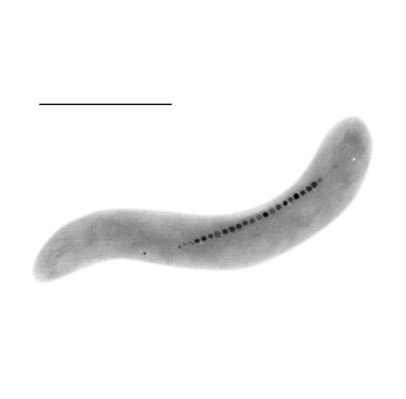Team:BCCS-Bristol/Modeling/BSim Features
From 2009.igem.org
(→References:) |
(→GRN modelling) |
||
| Line 43: | Line 43: | ||
BSim 2008: "Each of the modelling approaches [''GRNs and agent-based modelling''] have been considered in separate contexts, mainly due to the differing aspects of the system they are concerned with. Now, having working models for each, it would be possible to bring these together with the aim of improving simulation accuracy and allowing for the internal cellular dynamics to be studied in an ever changing physical environment. Such a hybrid model may also help shed light on the critical aspects of project as a whole." | BSim 2008: "Each of the modelling approaches [''GRNs and agent-based modelling''] have been considered in separate contexts, mainly due to the differing aspects of the system they are concerned with. Now, having working models for each, it would be possible to bring these together with the aim of improving simulation accuracy and allowing for the internal cellular dynamics to be studied in an ever changing physical environment. Such a hybrid model may also help shed light on the critical aspects of project as a whole." | ||
| - | + | BSim 2.0 provides a robust implementation of the second order and fourth order Runge-Kutta methods [''REF''] for single ODEs and systems. It is possible to easily specify systems of ODEs as objects within the simulation. These ODE systems can be "attached" to objects in the simulation if necessary and can be used to simulate any aspect of the environment to which they are coupled, depending on the user's requirements. An example would be attaching an ODE system to each bacterium and coupling these systems via an external chemical field. See the overview of our ongoing quorum-coupled repressilators simulation ''[LINK soon]'' for an example application of this. | |
| - | + | ||
| + | As a result of the modular nature of the solver implementation it would also be possible to implement stochastic ODEs, and delay differential equations in a similar manner. These features are likely to be implemented soon to assist with the modelling of more complex GRN systems across a population. | ||
=== Magnetotaxis === | === Magnetotaxis === | ||
Revision as of 16:24, 25 September 2009
iGEM 2009
Contents |
BSim Features
In this section we outline the main features available in BSim 2.0.
In Progress...
Simulation Features
Bacteria
- Heavy basis on literature
- Run and tumble by default (flagellar motor)
- chemotaxis!
- brownian motion and fluid forces implemented
- easily adaptable.
Interactions and actions
- easily specified and adaptable
- can do whatever you want:
- Collision
- Merging (vesicle/bacterium)
- GRNs
- other interactions:
- Everything can interact! chemical fields, GRNs, vesicles...
Vesicles
- Small, but size based on growth
- Size and creation rate based on rate of change of surface area [ref - steve?]
- Vesicle movement - brownian motion in a viscous fluid environment
- Interaction can be specified
Chemical Fields
- diffusion
- decay
- physical units
GRN modelling
BSim 2008: "Each of the modelling approaches [GRNs and agent-based modelling] have been considered in separate contexts, mainly due to the differing aspects of the system they are concerned with. Now, having working models for each, it would be possible to bring these together with the aim of improving simulation accuracy and allowing for the internal cellular dynamics to be studied in an ever changing physical environment. Such a hybrid model may also help shed light on the critical aspects of project as a whole."
BSim 2.0 provides a robust implementation of the second order and fourth order Runge-Kutta methods [REF] for single ODEs and systems. It is possible to easily specify systems of ODEs as objects within the simulation. These ODE systems can be "attached" to objects in the simulation if necessary and can be used to simulate any aspect of the environment to which they are coupled, depending on the user's requirements. An example would be attaching an ODE system to each bacterium and coupling these systems via an external chemical field. See the overview of our ongoing quorum-coupled repressilators simulation [LINK soon] for an example application of this.
As a result of the modular nature of the solver implementation it would also be possible to implement stochastic ODEs, and delay differential equations in a similar manner. These features are likely to be implemented soon to assist with the modelling of more complex GRN systems across a population.
Magnetotaxis
Magnetotactic bacteria are gram-negative, motile (by means of a flagella) bacteria. Each one forms a string of intracellular magnetic grains, known as magnetosomes.
Figure 1: Transmission electron micrograph of Magnetospirillum magnetotacticum showing the magnetosomes inside the bacteria. Bar equals 1 micron.
The term magnetotaxis, used to describe the motion of the bacteria in the direction of the magnetic field, denotes the magnetic field effects, solely, on the direction of the bacteria, and not on the speed of the bacteria.
Naturally occurring magnetotactic bacteria will instinctively travel in the direction of the geomagnetic field. It controls the bacteria in the same way as it would control a compass needle, aligning them both to magnetic north pole.
References:
http://www.calpoly.edu/~rfrankel/magbac101.html
Blakemore, RP (1982) Magnetotactic bacteria. Annual Reviews of Microbiology 36: 217-238.
Other Features
Separate the physical and biological aspects of features into 2 sections?
 "
"
